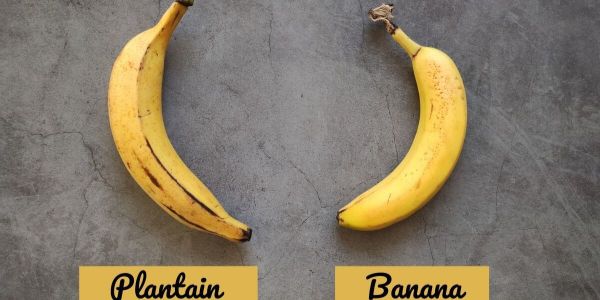If you have ever come across large banana-like fruits in a grocery, don’t mistake them for bananas, those are plantains. Plantains are a close family of banana and similar in shape, in fact the two have a lot in common. They are well known across Africa, Latina America and Caribbean. However, these two fruits are different. Plantains are not bananas
A plantain is kind of banana occurring naturally with a flavor and use slightly different from that of a normal banana. They have a similar origin with bananas, that is, Southeast Asia yet they are grown worldwide. Unlike bananas, plantains tend to be larger with a thicker skin.
Plantains are packed with more starch and low sugar compared to that of bananas. They can be green, yellow, or dark brown depending on the stage of ripening. Since plantains have high starch content, they are not usually consumed raw. As in, they must be properly cooked before eating. Moreover, they are treated more as vegetables and not fruits no wonder they are often cooked.
Similar to bananas, plantains contain complex carbs although a high percentage of the carbs comes from starch. A small difference in the case of bananas though, bananas’ most carbs comes from sugar. In as much as plantains are rich in nutrients, preparation plays a major role in bearing the standard health benefits
Plantains and Banana Differences
Plantains and bananas are exact images of one another, in fact it is normal to mistake one for the other. Despite many similarities of the two, one can discern the noticeable differences. Plantains differ from bananas in flavor, size, texture and their growing areas. Bananas tend to be smaller than plantains and are eaten when they are ripe and sweet. Plantains on the other hand can be eaten irrespective of the ripeness, that is, whether sweet or savory.
Where and how they are grown
Plantains are grown primarily in Africa, Colombia and other South American countries. Bananas, on the other hand are grown primarily in China and India, but also in some other countries across the world.
Both plantains and bananas grow from trees in bunches known as “hands”. They thrive well in humid environments and tropical climates.
Flavor, Texture, and Use.
Unlike the case of bananas where they can be consumed raw, it is crucial to consider cooking plantains whether ripe or not.
Bananas can be eaten raw, whereas plantains, at any stage of ripeness, need to be cooked in order to be eaten. Bananas are usually tender and contain more cream than plantains, on the other hand, plantains are contain more starch, and are mild in flavor.
Whereas plantains can be used in savory dishes when they are either yellow and sweet or green, bananas are often eaten with breakfast or mixed into dessert.
Taste
Plantains have a different taste from that of bananas especially when their stages of ripeness are not at per. Both ripe bananas and ripe are usually tender and sweet, however, when bananas are overripe, they are sweeter.
Unripe bananas are likely to a have a little bitterness, whereas, unripe plantains are not sweet at all but have a starchy flavor.
When they are ripe
The clearest way to distinguish between a ripe and unripe plantain or bananas is the color change. Unripe plantains are green while ripe plantains are yellow with many black spots. Bananas on the other hand are greenish-yellow when unripe and fully yellow when yellow.

